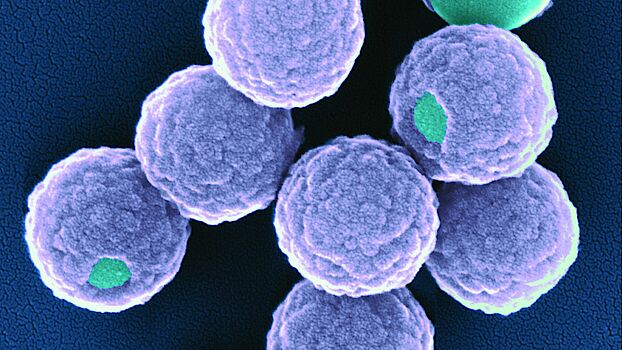/ Erfolgsgeschichten
Successful Collaboration Between University, University of Applied Sciences, and Industry
Innovative biocatalysts thanks to nanotechnology
In 2014, scientists from the University of Applied Sciences and Arts Northwestern Switzerland (FHNW), the University of Basel and Basel-based company INOFEA AG launched the NANOzyme Argovia project, and with it a successful collaboration to make enzymes more attractive for biotechnological applications. To achieve this, the interdisciplinary research team developed a system in which different enzymes are combined, immobilized on nanoparticles and protected by a protective layer of organosilica. The researchers were able to show that this enzyme system effectively catalyzes a cascade of different chemical reactions and is suitable for a range of biotechnological applications.
Regeneration required
Enzymes play a vital role in all organisms. They specifically catalyze the conversion of a wide range of chemical compounds in life processes such as digestion and reproduction. Enzymes are also suitable for biotechnological applications because they work highly effectively and specifically.
For example, enzymes can be used to oxidize or reduce chemical compounds. Almost all enzymes are proteins. Besides the protein part, many enzymes require a low molecular weight molecule – called cofactor – that is, together with the substrate, also subject to chemical change during the enzymatic reaction.
These cofactors are often unstable and must be replaced or regenerated before the enzyme can catalyze another chemical conversion. Due to their instability and the need to regenerate the cofactors, such enzymes are often too complex and expensive for industrial biotechnology applications.
The combination is the key
As part of the NANOzyme Argovia project, the teams of Professor Patrick Shahgaldian, Professor Philippe Corvini (both FHNW), and Professor Thomas Ward (University of Basel) collaborated with Basel’s INOFEA AG and have identified ways to solve this problem. In a first step, the scientists combine a natural enzyme with an artificial enzyme. The natural enzyme catalyzes the desired chemical reaction; the artificial enzyme then ensures the immediate regeneration of the cofactor so that the natural enzyme can work again.
Additionally, the researchers have developed a chemical strategy to immobilize this enzyme combination on the surface of silica nanoparticles and then shield it within a protective layer. This layer of organosilica particles not only protects the sensitive enzymes, but also creates a tailored compartment in which the exchange of substrate and product is restricted. This ensures that there is always sufficient substrate available which leads to increased product levels.
Optimal conditions created
“In our experiments, we have not only tested the optimal enzyme combinations and evaluated the best conditions for forming the protective layer, but also investigated the adequate ratio of the different enzymes involved,” comments project leader Patrick Shahgaldian. For their experiments, the scientists chose a natural enzyme that converts Flavin mononucleotide (FMN) into its reduced form (FMNH2). NADH (Nicotinamide adenine dinucleotide) is the cofactor required for this enzyme. It transfers a hydride ion H– and is oxidized to NAD+. An artificial enzyme (transfer hydrogenase) regenerates the NAD+ back to NADH so that it can continuously produce more FMNH2 utilizing cheap formic acid as hydride source. The success of the cascade enzymatic reaction is proven using the soluble enzyme luciferase, which oxidizes FMNH2 to FMN in the presence of oxygen.
Over various stages a colored complex is formed whose concentration can be measured spectroscopically. The increasing formation of this colored complex is a clear proof that the cofactor has successfully been regenerated. The results clearly demonstrate the validity of the concept working with protected, immobilized enzymes. With both soluble enzymes and immobilized enzymes without a protective layer, the amount of dye produced was significantly lower than with the immobilized enzymes protected by the organosilica layer.
Interest from industry
An enzyme cascade of this type, which is connected with an in-situ regeneration of the cofactor, can be implemented in various oxidation and reduction reactions for biotechnological applications. The researchers in the NANOzyme Argovia project are currently focusing primarily on developing a rapid test for specific resistant bacterial strains. They will also examine whether the nanocatalysts are suitable for degrading chlorinated hydrocarbons. Based on the successful results the project was just recently prolonged for another year. “We are actively supporting the continuation of NANOzyme because the excellent collaboration has produced a range of promising industrial applications,” comments Dr. Yves Dudal, chief executive officer of INOFEA, on the success of the project.

